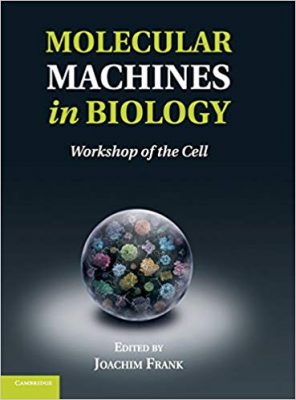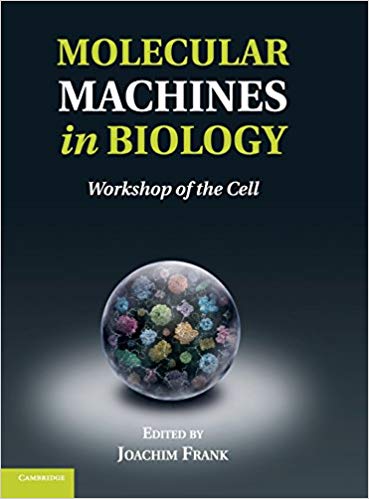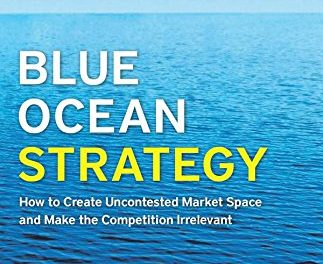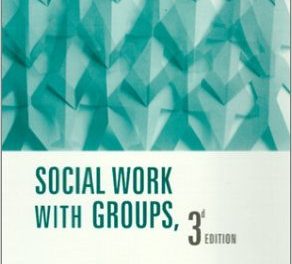 Editor: Joachim Frank
Editor: Joachim Frank
Publisher: Cambridge University Press – 272 pages
Book Review by: Nano Khilnani
The use of molecular machines in biology has dramatically transformed the medical field in a significant ways, as they now perform many of the processes that occur in cells, including:
- Transcription
- Translation
- Protein folding
- Protein degradation
This book looks at important molecular machines whose architecture is known and whose functional principles have been established by tools of biophysical imaging, such as
- Cryo-electron microscopy
- Fluorescence probing (single-molecular FRET or Forster resonance energy transfer )
- X-ray crystallography
Twenty-eight specialists in biology (including genomic, molecular and structural biology), biophysics, chemistry (including biochemistry), crystallography, genetics, genomics, and physics (including biophysics) from different parts of the United States and five other countries – Germany, India, Russia, Spain, and the United Kingdom – authored the 12 chapters of this book.
We list the titles of the chapters below to provide you a broad overview of what you will find covered and discussed in this book.
Introduction
- Single-Molecular Fret: Technique and Applications to the Studies of Molecular Machines
- Visualization of Molecular Machines By Cryo-Electron Microscopy
- Statistical Mechanical Treatment of Molecular Machines
- Exploring the Functional Landscape of Molecular Machines Via Elastic Network Normal-Mode Analysis
- Structure, Function, and Evolution of Archaeo-Eukaryotic RNA Polymerases – Gatekeepers of the Genome.
- Single- Molecule Fluorescence Resonance Energy Transfer Investigations of Ribosome-Catalyzed Protein Synthesis
- Structure and Dynamics of the Ribosome as Revealed by Cryo-Electron Microscopy
- Viewing the Mechanisms of Translation Through the Computational Microscope
- The Ribosome as a Brownian Rachet Machine
- The GroEL / GroES Chaperonin Machine
- ATP Synthase – A Paradigmatic Molecular Machine
- ATP-Dependent Proteases: The Cell’s Degradation Machines
When you bring up the word ‘machines’ in your mind, you visualize things like pistons, shafts, gears, balls, chains, and the like, as their components, that move mechanically and have various functions such as assemble cars, for example.
But molecular machines are within cells in living beings that perform a variety of functions such as taking nutrients from the food and converting them into energy. Cells do lots of things such as grow, metabolize, synthesize protein, heal wounds, replicate themselves, and much more.
The editor Joachim Frank contrasts and compares man-made machine and molecular machines this way: “The world of molecules this book is concerned with is quite different in many respects. In this water-drenched nanodimension world, mobile parts are in constant jittering motion, powered by random thermal bombardment from the molecules of the aqueous solvent.
“The forces of gravity and inertia are dwarfed, by orders of magnitude, by those protected by non-covalent interactions, collisions with water molecules, and drag in the solvent. Complicating matters further, biological molecules and the ‘levers’ and ‘actuators’ within them lack the rigidity of materials like steel.
“Perhaps most difficult to conceive by a mind trained on the experience of a macroscopic world, however, is the disintegration of causal connections into a series of sporadic irreversible chemical events that impart directed motion, separated by stretches of ‘time’ where the molecule has no apparent directionality.” .
In 1998, Bruce Albert wrote an essay published in the journal Cell in which he used the term “molecular machines” that the editor Joachim Frank writes in his Introduction to this book, “certainly helped in popularizing the term and in firing up the imagination of young students and scientists equipped with new tools that aim to probe and depict the dynamic nature of events that constitute life at the most fundamental level.”
He writes that this “dynamic” nature of the cell shows us that they are actively engaged in making products, just as man-made steel machines do. He contrast this new understanding of what a cell does with the ”long-held view of the cell as a sack or compendium of sacks in which molecules engage or disengage one another more or less randomly.”
Joachim Frank and a number of his colleagues established in 2005 at the Wadsworth Center in Albany, an organization they named as he Center for Biological Machines. They began a monthly seminar series which they called Molecular Machine Shop.
At these events they highlighted some of the complicated structures that work in living cells, which were increasingly coming into clearer view than before with X-ray crystallography and cryo-electron microscopy. These imaging modes brought out to view some common features and general principles underlying those biological nanomachines.
All these discoveries and developments over the years about living cells as “molecular machines,” that were sped up particularly after the invention of the three biophysical tools we name above, make the current state of the rapid growth of medical research an exciting and optimistic era for us to be living in. This book’s editor and authors are therefore making an important contribution to the advancement of medical research that will enable us to better understand the human body on a molecular level and hopefully lead to new treatments of some diseases.
Editor:
Joachim Frank is a Howard Hughes Medical School Investigator, Professor of Biochemistry and Molecular Biophysics, and Professor of Biological Sciences at Columbia University. He is a member of the National Academy of Sciences and a fellow of the American Academy of Arts and Sciences. Dr. Frank has received many awards for his research, including, with David DeRosier, the Elizabeth Robert Cole Award of the Biophysics Society.
He has published more than 200 peer-reviewed articles, written numerous book chapters, and authored or edited five books, including Electron Crystallography of Biological Macromolecules, coauthored with Robert M. Glaeser, Kenneth Downing, and Wah Chiu 2007); Three-Dimensional Electron Microscopy of Macromolecular Assemblies (2006); and Electron Tomography, second edition (2006).







